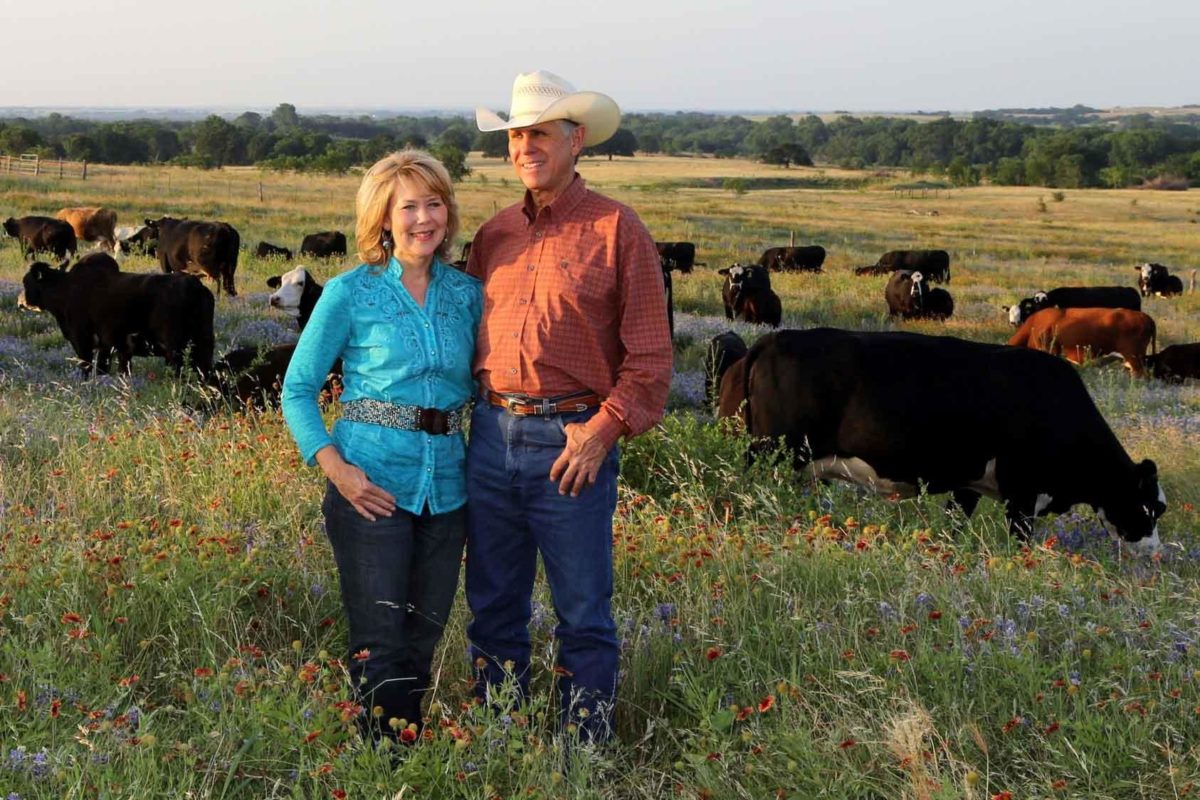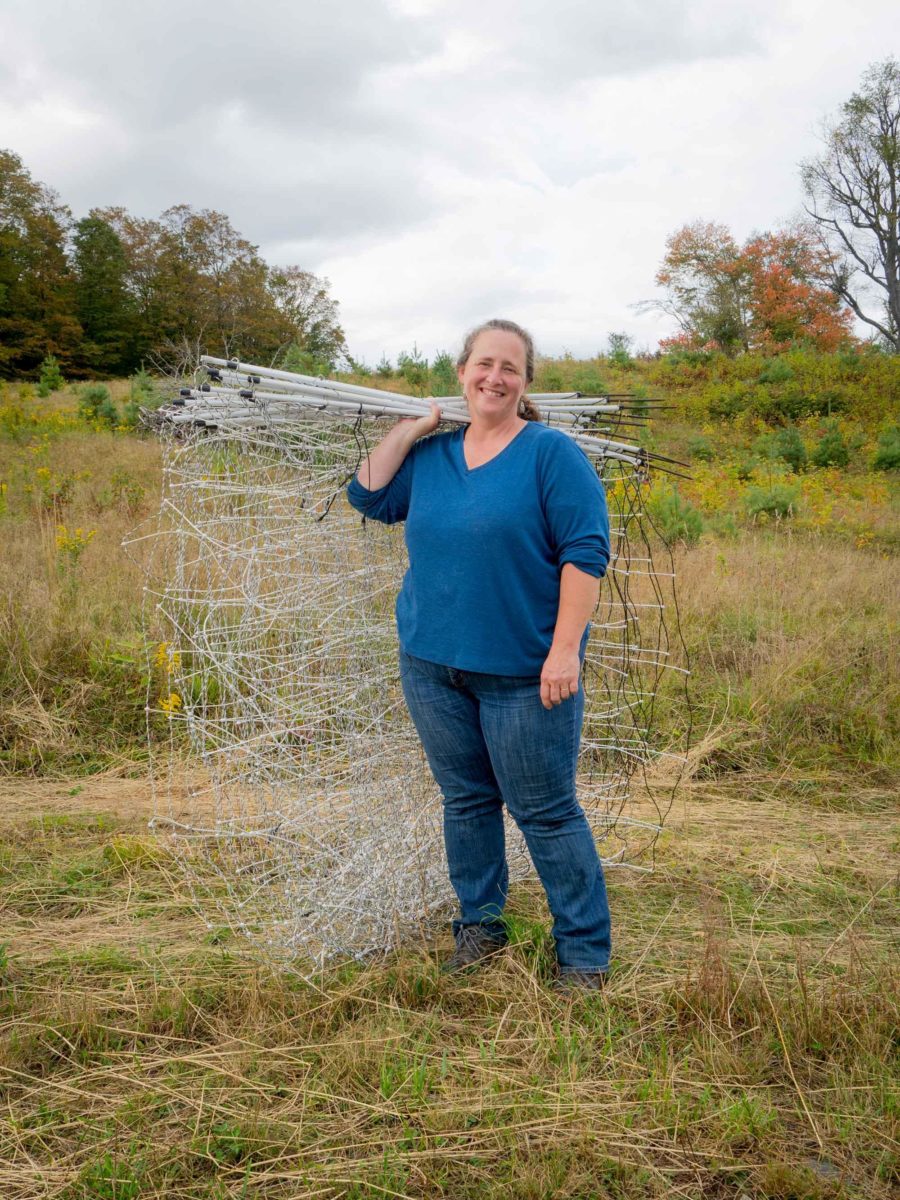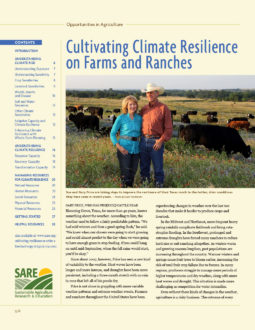
Gary Price, who has produced cattle near Blooming Grove, Texas, for more than 40 years, knows something about the weather. According to him, the weather used to follow a fairly predictable pattern. “We had cold winters and then a good spring flush,” he said. “We knew when our clovers were going to start growing and could almost predict to the day when we were going to have enough grass to stop feeding. If you could hang on until mid-September, when the fall rains would start, you’d be okay.”
Since about 2007, however, Price has seen a new kind of variability to the weather. Heat waves have been longer and more intense, and droughts have been more persistent, including a three-month stretch with no rain in 2011 that left all of his ponds dry.
Price is not alone in grappling with more variable weather patterns and extreme weather events. Farmers and ranchers throughout the United States have been experiencing changes in weather over the last two decades that make it harder to produce crops and livestock.
In the Midwest and Northeast, more frequent heavy spring rainfalls complicate fieldwork and bring catastrophic flooding. In the Southwest, prolonged and extreme droughts have forced many ranchers to reduce herd size or exit ranching altogether. As winters warm and growing seasons lengthen, pest populations are increasing throughout the country. Warmer winters and springs cause fruit trees to bloom earlier, increasing the risk of total fruit crop failure due to freezes. In many regions, producers struggle to manage more periods of higher temperatures and dry weather, along with more heat waves and drought. This situation is made more challenging as competition for water intensifies.
Even without these kinds of changes in the weather, agriculture is a risky business. The outcome of every growing season hinges on dynamic interactions between soils, crops, livestock, pests, weather, finances, regulations and markets. Year after year, farmers and ranchers do their best to manage for these sometimes unpredictable risks inherent to their profession.
But in recent years, managing weather-related risk, already one of the highest risk factors in agriculture, has become even harder, as weather patterns become more variable from day to day and season to season.
These changes in weather patterns have created a new kind of risk that is expected to grow in importance in coming years. This new kind of risk, called climate risk, is defined as the additional risk created by rising temperatures and more variable precipitation patterns associated with changing climate conditions.1
The good news is that many of the best strategies for addressing climate risk are already familiar to farmers and ranchers through practices commonly associated with sustainable agriculture, such as diversifying crops, livestock, enterprises and markets; improving soil health through cover crops, no-till, composting and other techniques; integrating crops and livestock; adopting management intensive grazing; reducing the use of off-farm inputs; and using whole-farm planning.
Price, for example, weathered the drought in 2011–2012 because of changes he had made to his farm early on: planned grazing to restore degraded soils and native tallgrass prairies throughout his ranch; reducing his herd size to about 85 percent of what he knew his land could support; and leasing additional rangeland to provide some forage reserves in the event that extreme weather reduces forage yields. He is now experimenting with grazing cover crop cocktails on his cropland. “We’re learning to manage for less water … and more heat, so we’re keeping as much cover as we possibly can on the land and then trying to balance that out with our stock numbers,” he said.
As these changes make Price’s ranch more sustainable, they also make it resilient, a key concept and strategy to help manage the new risks posed by changing weather patterns.
A resilient agricultural operation is one that is diverse, healthy, flexible and self-reliant. When confronted with changing weather patterns or an extreme weather event, a resilient farm or ranch has more capacity to avoid or reduce physical and financial damage than comparable farms and ranches using conventional management practices, and it can recover from damage more quickly. A resilient farm or ranch can also change more easily to meet the future challenges and opportunities created by changing climate conditions.
The characteristics of climate-resilient operations also serve to buffer many other risks that make farming and ranching a day-to-day challenge.
Cultivating Climate Resilience on Farms and Ranches outlines the new challenges that changing weather patterns pose in agriculture throughout the United States, and what you can do to make your farm more resilient. By understanding the climate risks to your production system and practices that can reduce those risks, you can identify some management steps that will improve the resilience of your farm or ranch to changing climate conditions while allowing you to achieve your other sustainability goals. “You just don’t know what’s around the next corner, so you have to prepare for the worst,” Price said. “Hope for the best of course, but you know, hope is not a plan.”
Using Sustainable Agriculture Principles to Manage Climate Risk

Sustainable agriculture and agroecology, the science of sustainable food systems, provide a strong foundation upon which to build a resilient U.S. agriculture. A rich knowledge base of practical application and innovation informed by a deep understanding of the ecology of agriculture can be used to guide the development of locally adapted, sustainable and climate-resilient systems. Over the last 40 years, farmers, ranchers and others committed to sustainable food systems have worked together to develop and share information about agricultural sustainability through both formal and informal research, teaching and learning networks. This accumulated knowledge provides a wealth of potential adaptations, well-tempered by practical, place-based experience, that you can use to enhance the climate resilience of your farm or ranch.
Key sustainable agriculture principles that have proven useful in managing production risks created by weather variability and extremes include an emphasis on soil health, diversified production systems, ecological design and diversified, high-value marketing. Healthy soils buffer the farm or ranch from the increased variability and extremes in precipitation that currently challenge farmers and ranchers throughout the country. Diversified production systems build soil health and spread climate risks through the growing season, reducing potential losses from any single weather event. Ecological design reduces climate risk by creating production systems that are well adapted to the local landscape and climate.
Ecological design also enhances ecosystem services that buffer production from weather-related disturbances and reduce costs. Diversified, high-value marketing spreads climate risks across multiple markets, improves profitability and produces social capital, all of which enhance capacity to respond to challenging climate conditions and to recover from climate-related damages.
1 Managing Climate Risk: New Strategies for Novel Uncertainty. 2012. Walthall, C. et. al. In Climate Change and Agriculture in the United States: Effects and Adaptation. p. 136. USDA Technical Bulletin 1935
Farmers and Ranchers Adapt to Changing Weather
Recent research shows that U.S. producers have already made changes, or expect to make changes, to adapt to the more variable weather and extreme conditions they are witnessing. Examples include:
- Corn and soybean farmers in the Midwest and Northern Great Plains are adapting to longer dry periods and drought, higher disease and insect pressure, increased heat stress, and more frequent extreme rains by implementing new in-field conservation practices such as cover crops, purchasing more crop insurance or adjusting their insurance plans, and adding new technologies.
- Producers in Mississippi, Texas, North Carolina and Wisconsin growing corn, cotton, grain sorghum, rice and wheat say that if weather variability and extremes continue to intensify, the changes they would be most likely to make include diversifying crops, buying crop insurance, modifying lease arrangements or exiting farming altogether.
- Maine farmers representing seven major commodity groups—potatoes, dairy, blueberries, vegetables, apples, beef and nursery plants—have adapted to more erratic weather, new pests and more extreme weather events through crop diversification, adding drainage or irrigation systems and more protected growing space, and ecological production practices that build soil health.
- Organic and conventional grain producers in Montana have adapted to more frequent and extreme drought by diversifying crops, improving soil health and increasing profitability by reducing costs and selling into high-value direct markets.
- Crop and livestock producers in Kansas report that changing weather conditions have increased variability of crop yields, pasture regrowth, and crop and livestock maturation rates. To adapt, these producers are testing new crops and production practices, reducing tillage, investing in more efficient irrigation and purchasing more production insurance.
Sources for these examples are (in order):
Climate Change Beliefs, Risk Perceptions, and Adaptation Behavior Among Midwestern U.S. Crop Farmers. 2017. Mase, A., B. Gramig and L. Propkey. Climate Risk Management 15: 8–17.
U.S. Agricultural Producer Perceptions of Climate Change. 2013. Rejesus, R. et al. Journal of Agricultural and Applied Economics 45: 701–18.
How to Communicate With Farmers About Climate Change: Farmers’ Perceptions and Adaptations to Increasingly Variable Weather Patterns in Maine. 2014. Jemison, J. Jr., D. Hall, S. Welcomer and J. Haskell. Journal of Agriculture, Food Systems and Community Development 4(4): 57–70.
Raising Grain in Next Year Country: Dryland Farming, Drought, and Adaptation in the Golden Triangle, Montana. 2015. Stephens, Caroline M. University of Montana Theses, Dissertations, Professional Papers. Paper 4513.
Agricultural Producer Perceptions of Climate Change and Climate Education Needs for the Central Great Plains. 2014. Campbell Hibbs, A. et al. Publication of the University of Nebraska Public Policy Center. Paper 154.
About the Author
This bulletin was written by Laura Lengnick and is an adaptation of her 2015 book Resilient Agriculture: Cultivating Food Systems for a Changing Climate, New Society Publishers: Gabriola Island, Canada.
